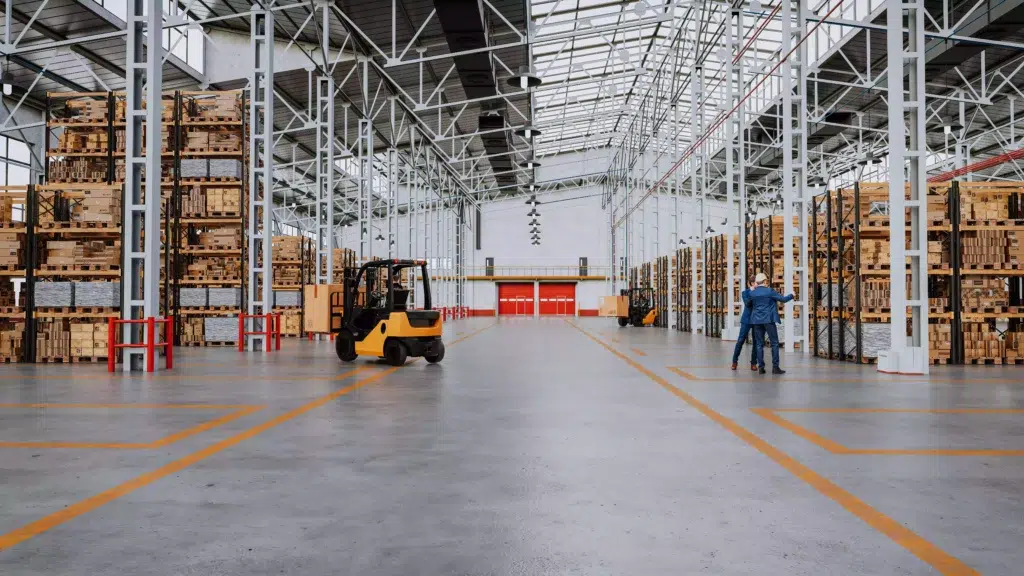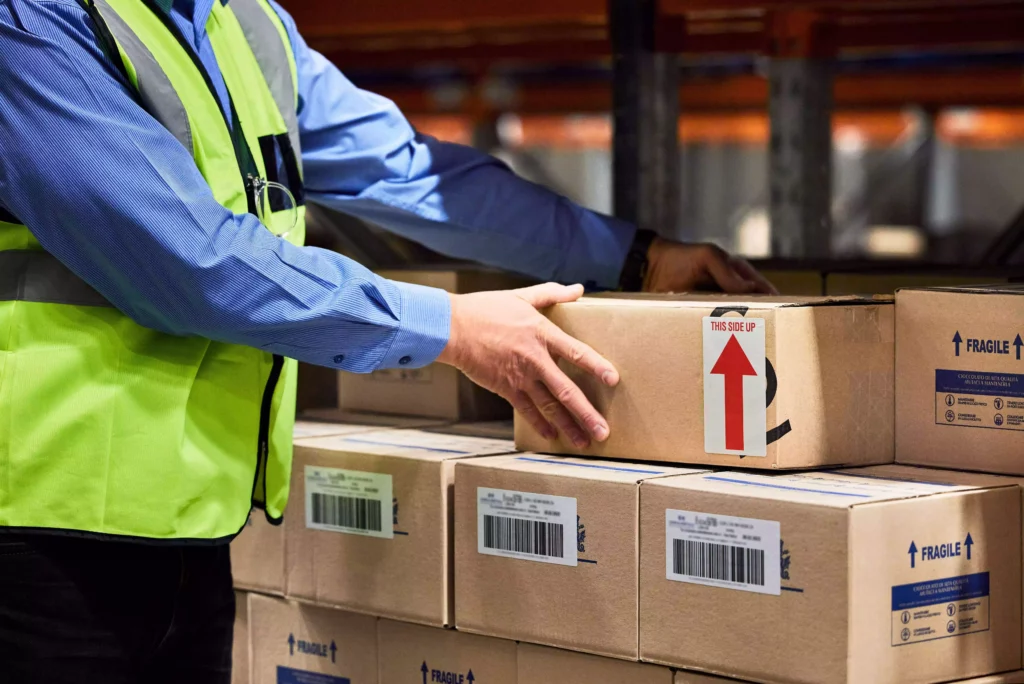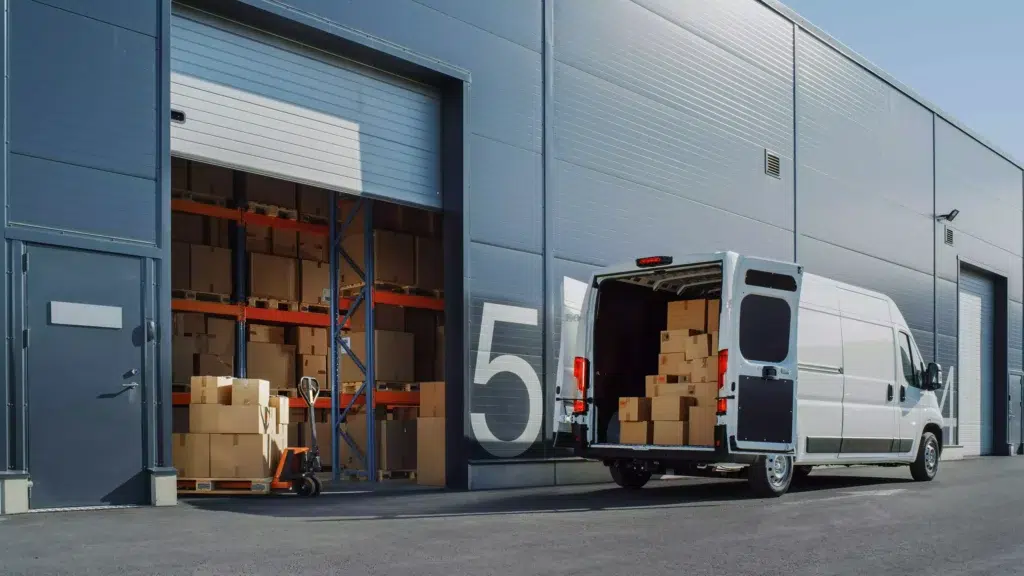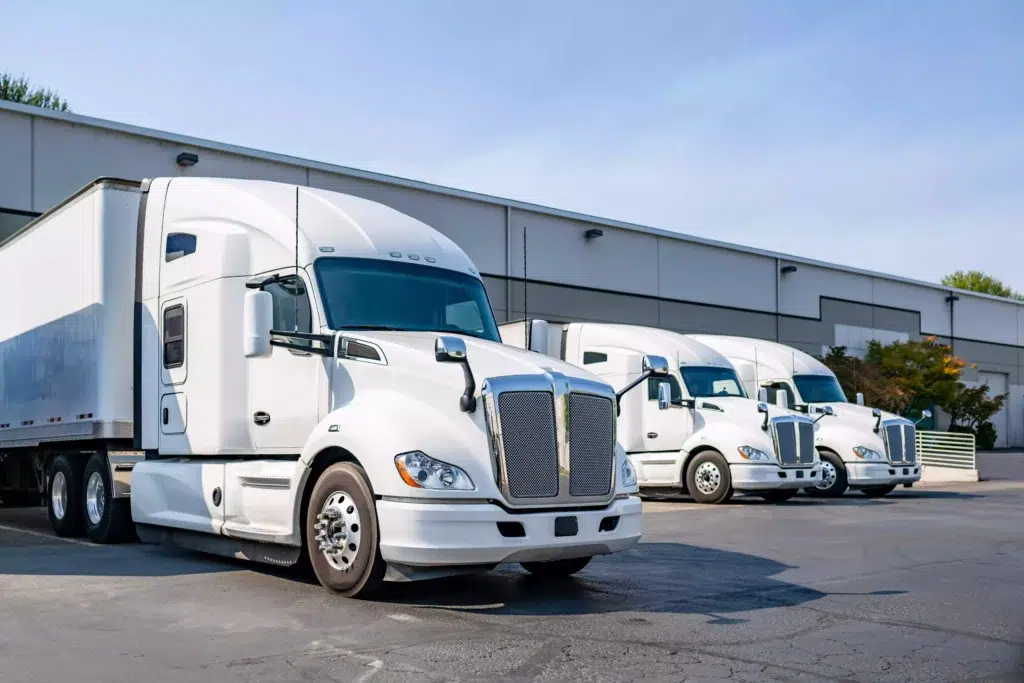The last mile of delivery is where logistics operations succeed or achieve their potential. While your packages may travel thousands of miles seamlessly through your supply chain, that final stretch between the distribution center to the customer’s door can define your entire operation. For logistics managers facing mounting pressure to deliver faster, cheaper, and more reliably, route optimization is the foundation that supports last mile success.
At CIGO Tracker, we’ve helped hundreds of logistics companies transform their last mile operations through intelligent route optimization. Companies that fail to optimize their routes are essentially throwing money out the window while frustrating customers.
Let’s explore why smart route optimization is absolutely critical for last mile delivery success.
Key Takeaways
- Last mile delivery accounts for over 50% of shipping costs, making optimization critical for profitability.
- CIGO Tracker delivers measurable benefits including 15-25% fuel savings and 95%+ on-time delivery rates.
- Effective customer tracking depends on accurate route optimization as its foundation.
- Poor route planning creates hidden costs in vehicle maintenance, driver turnover, and customer satisfaction.
- CIGO Tracker integrates with existing logistics systems and provides real-time adaptability for scalable operations.
The High Stakes of Last Mile Delivery
Last mile delivery plays a critical role in shaping both customer satisfaction and operational costs.
To understand its impact, it helps to look at why this final stretch carries such a high price tag.
Why the Last Mile Is the Most Expensive Mile
The numbers tell a clear story: last mile delivery accounts for over 50% of total shipping costs, even though it covers the shortest distance in your supply chain.
This cost concentration happens because of unique challenges that make the last mile fundamentally different compared to long-haul transportation.
Unlike highway routes between distribution centers, last mile delivery involves:
- Multiple stops in dense areas with frequent starts and stops.
- Complex urban traffic patterns that change throughout the day.
- Tight time constraints with specific delivery windows.
- Residential addresses that may be difficult to locate or access.
- Customer availability issues leading to failed delivery attempts.
These factors combine to create a perfect storm of inefficiency. Without proper route optimization, drivers spend more time navigating, idling in traffic, and making unnecessary trips, which directly impact your bottom line.
Customer Expectations Are at an All-Time High
Modern consumers expect fast delivery as a standard. Industry leaders have raised the bar by offering same-day and even one-hour delivery, shaping what customers now view as the norm.
They want real-time tracking with accurate estimated arrival times at every step of the delivery process. Same-day or next-day delivery is now seen as a basic expectation, not a premium service. Customers also look for narrow delivery windows that align with their busy schedules. Clear and proactive communication about timing updates or changes further builds trust and satisfaction.
With 90% of consumers actively tracking their packages, as reported by BusinessWire, and 80% holding high expectations for tracking accuracy, visibility now plays a central role in customer satisfaction.
Meeting these expectations requires more than effort. It requires the precise route optimization capabilities that CIGO Tracker provides to deliver on promises while maintaining operational efficiency.
What Is Route Optimization in Last Mile Logistics?
Given these mounting costs and challenges, how can logistics teams regain control? It starts with understanding what modern route optimization truly entails and how technology like CIGO Tracker transforms traditional delivery operations.
Definition and How It Works
Route optimization is the process of determining the most efficient paths for delivery vehicles to take when visiting multiple stops. CIGO Tracker’s advanced algorithms analyze hundreds of variables simultaneously, including distance between stops, current traffic conditions, vehicle capacity constraints, driver hours and break requirements, customer time windows, and priority levels for different deliveries.
CIGO Tracker calculates optimal routes that reduce total travel time, shorten distance, and lower costs while improving on-time deliveries and customer satisfaction.
This kind of result highlights the direct operational impact smart route optimization can have on both productivity and resource efficiency.
Static vs Dynamic Optimization
CIGO Tracker offers both static and dynamic optimization capabilities to match your operational needs:
- Static Route Optimization plans routes in advance using historical data and established constraints. This method is ideal for operations with predictable delivery schedules and routes that follow consistent stop patterns. It is especially effective when real-time variables such as traffic or last-minute changes are minimal.
- Dynamic Route Optimization, on the other hand, adjusts routes in real time based on evolving conditions. It takes into account live traffic data, road closures, and new orders that come in during the day. It also responds to unexpected events like vehicle breakdowns, changes in driver availability, or customer requests for updated delivery timing. This flexibility allows logistics teams to adapt quickly and maintain efficiency throughout the day.
CIGO Tracker’s hybrid approach starts with intelligent static optimization and layers dynamic adjustments throughout the day, ensuring your routes adapt to real-world conditions while maintaining operational efficiency.
Key Features to Look For
When evaluating route optimization solutions, CIGO Tracker delivers a powerful set of features designed to support precision, safety, and operational scale:
- Live traffic data integration: Routes adjust in real time based on current traffic conditions, helping drivers avoid slowdowns and stay on schedule throughout the day.
- Weather condition monitoring: Anticipates potential delays by factoring in real-time weather forecasts, allowing dispatchers to reroute proactively and maintain safe driving conditions.
- Vehicle capacity optimization: Takes into account weight, volume, and special delivery requirements to maximize the efficiency of every vehicle in the fleet.
- Delivery time slot management: Aligns each delivery with customer preferences, creating a more reliable and predictable experience for every stop.
- Driver skill and certification matching: Ensures that specialized deliveries are assigned to properly qualified drivers, adding confidence for high-priority or sensitive shipments.
- Mobile driver apps: Equips drivers with turn-by-turn navigation, task updates, and instant delivery confirmation through an intuitive mobile interface.
CIGO Tracker turns complex delivery variables into data-driven decisions that support performance across every route.
How Route Optimization Cuts Miles in Last Mile Delivery
With smart route optimization, you cut wasted miles in last mile delivery significantly.
Remove backtracking and zigzag patterns
Backtracking is one of the quietest ways to waste miles in last-mile delivery.
When drivers crisscross the same streets, every detour compounds fuel use, drive time, and stress. Effective delivery route planning clusters nearby stops into compact zones, then sequences them in a clean forward pattern so trucks do not ping-pong across a territory.
According to an urban logistics study, geographic clustering can significantly cut total travel distance and improve delivery efficiency. That kind of structure is what lets route optimization software turn messy maps into predictable, repeatable routes.
Increase stop density and reduce empty distance
High-performing last-mile delivery networks treat every mile as a scarce resource. Increasing stop density means grouping orders so that each block or micro-zone carries several deliveries rather than a single isolated drop.
Drivers spend more time serving customers and less time cruising between scattered addresses.
When delivery route planning focuses on compact territories, the empty distance shrinks quickly.
Fewer gaps between stops, fewer lift drops per mile, and stabilized daily route patterns. In turn, route optimization software can replicate winning designs, support consistent delivery efficiency, and simplify scaling during peak periods.
Use historical data to trim wasted miles
Historical data turns route optimization from guesswork into disciplined logistics optimization.
Instead of only reacting to daily problems, you study dwell time, service duration, and when congestion reliably appears on key corridors. Those patterns reveal where drivers consistently lose minutes and why routes stretch longer than planned.
Once you feed these insights into delivery route planning, routes start matching reality instead of a theoretical map. Stops with long service times get earlier slots, high-delay zones move to off-peak periods, and reattempts or last-minute detours fade as exceptions.
Miles and distance metrics to monitor after optimization
After optimization, mileage needs to stay under a microscope rather than drift quietly upward again. Clear metrics keep last-mile delivery grounded in data rather than gut feel.
Key distance and fuel indicators to monitor include:
- Total miles per route, compared week over week
- Miles per stop across different territories or drivers
- Average distance between consecutive stops on a route
- Fuel used per stop or per order
When route optimization software moves these numbers in the right direction, you know delivery efficiency improvements are real, not temporary luck.
7 Ways Route Optimization Improves Last Mile Success
Route optimization plays a key role in improving last mile delivery.
It helps companies plan routes with greater accuracy, increase delivery speed, and keep customers informed. Here’s how CIGO Tracker supports last mile success through smarter routing.
1. Faster Delivery Times

A customer makes a purchase with a sense of confidence. They’ve done this before, ordered, tracked, received. It’s a familiar rhythm. As the day unfolds, they check the tracker, adjust their plans, and wait for the delivery to arrive within the promised window.
But the window closes. No package. No update. Just silence.
That small disruption grows louder in their mind. Doubt replaces trust. They begin to question the brand, the process, the promise. A message is sent, a review is written, and the next time they shop, hesitation takes the lead.
This moment is where delivery performance matters most. CIGO Tracker’s optimized routes eliminate the guesswork from navigation, reducing delays and preventing costly backtracking. When drivers follow scientifically calculated routes, they can:
- Complete more deliveries per shift.
- Avoid traffic congestion hot spots.
- Minimize time spent searching for addresses.
- Reduce unnecessary mileage between stops by up to 30%.
2. Lower Fuel and Labor Costs
Every mile saved through CIGO Tracker’s route optimization translates directly to cost savings. Our clients typically see fuel consumption reduced by 15 to 25 percent through shorter, more logical routes that avoid unnecessary detours.
Labor costs decrease as drivers complete routes faster and more efficiently. Vehicle maintenance expenses are also lowered, thanks to reduced wear and tear on trucks that no longer spend hours navigating inefficient paths.
In many cases, overtime payments are eliminated altogether as drivers consistently finish their routes within scheduled hours. These savings compound over time, creating a leaner, more scalable delivery operation.
3. Higher On-Time Delivery Rates
CIGO Tracker creates predictable, reliable delivery schedules that align with customer time windows. This reliability leads to:
- Improved customer satisfaction scores as recipients receive their orders on time and gain confidence in the delivery experience.
- Reduced need for re-delivery attempts, which saves both time and operational resources by getting it right the first time.
- Better resource planning and capacity management since consistent scheduling makes it easier to assign the right drivers, vehicles, and routes in advance.
- Enhanced reputation in competitive markets, where consistent on-time performance sets companies apart and builds long-term customer loyalty.
One e-commerce fulfillment company achieved a 97% on-time delivery rate within six months of implementing CIGO Tracker, up from 78% with their previous manual planning system
4. Reduced Customer Complaints
One of the most frequent customer service issues is WISMO (“Where is my order?”) inquiries. CIGO Tracker’s optimized routes with accurate tracking reduce complaints by providing realistic ETAs that reflect actual route conditions, so customers aren’t left guessing.
It also enables proactive communication when delays occur, keeping customers informed rather than frustrated. As a result, first-attempt delivery success rates improve, and recipients experience greater consistency in when and how their packages arrive.
This level of reliability builds trust and reduces the volume of incoming support tickets.
5. Fewer Failed Deliveries
Failed deliveries cost two to three times more than successful ones. CIGO Tracker reduces failures through smarter scheduling that considers when customers are most likely to be available.
When unexpected issues come up, dynamic rerouting helps keep deliveries on track. The platform also strengthens coordination between drivers and customers, so expectations are clear on both sides. In the event of a missed attempt, optimized backup plans are already in place, helping teams recover quickly and complete the delivery without added cost or disruption.
6. Smarter Dispatching
CIGO Tracker’s real-time optimization enables intelligent dispatching decisions when unexpected situations arise:
- Reassigning deliveries to nearby drivers when vehicles break down, ensuring service continues smoothly without delays or customer disruption.
- Balancing workloads throughout the day by reallocating stops based on changing conditions, helping drivers stay efficient and avoid burnout.
- Prioritizing urgent deliveries without disrupting entire routes, so time-sensitive shipments reach their destination while the rest of the schedule stays on track.
- Making data-driven decisions about overtime and additional resources, allowing managers to allocate labor and fleet capacity more effectively in real time.
These adaptive capabilities help logistics teams stay agile and responsive, even when conditions shift unexpectedly.
7. Scalability During Peak Seasons
Holiday seasons and promotional periods can overwhelm unoptimized operations. CIGO Tracker adapts to volume spikes by efficiently utilizing temporary drivers and vehicles, integrating them seamlessly into existing routes without compromising delivery efficiency. It maximizes capacity across expanded fleets, ensuring that every resource is used to its full potential.
Even as demand rises, service quality remains consistent, allowing businesses to meet customer expectations without sacrificing reliability.
At the same time, CIGO Tracker provides clear visibility into capacity limits and potential bottlenecks, giving teams the information they need to make smart, real-time decisions and stay ahead of peak season challenges.
The Link Between Route Optimization and Tracking

Tracking and delivery route planning may seem like separate functions, but they work best when fully aligned. Together, they create the visibility and reliability that customers now expect with every delivery.
Why You Can’t Have Effective Tracking Without Optimization
Customer tracking is only as reliable as the routes that power it. Without proper logistics optimization, tracking systems provide inaccurate ETAs and unreliable updates. CIGO Tracker’s integrated approach ensures effective tracking through:
- Accurate route calculations that reflect real-world conditions.
- Precise stop sequencing that matches actual delivery plans.
- Realistic time estimates based on optimized routes.
- Live updates that account for route changes and delays.
How Route Optimization Feeds Customer-Facing Tracking Tools
CIGO Tracker’s route optimization integrates seamlessly with customer tracking portals, providing:
- Real-time stop sequence showing where each package is in the delivery route.
- Dynamic arrival time estimates that update based on actual progress.
- Delivery status updates at each completed stop.
- Proactive notifications about delays or delivery window changes.
Real-Time Visibility Reduces Operational Firefighting
When CIGO Tracker’s route optimization and tracking work together, operations teams spend less time managing crises and more time improving processes:
- Fewer customer service inquiries requiring manual investigation.
- Better coordination between drivers, dispatchers, and customer service.
- Smoother handoffs between shifts and service areas.
- Data-driven insights for continuous process improvement.
How Route Optimization Helps You Hit ETAs Consistently
With disciplined route optimization, ETAs become predictable, measurable, and reliable across the last mile.
Inputs you need for accurate ETAs
Accurate ETAs start with strong inputs, not only clever mapping logic.
You need planned service times that reflect reality at the doorstep. Traffic patterns by time of day also matter, since a 10 a.m. route behaves differently from a 4 p.m. run.
Add reliable dwell times and realistic driver start times, and the picture gets sharper. Route optimization engines can calculate legs with confidence instead of smoothing over gaps.
As inputs improve, ETA accuracy stabilizes and becomes something you can defend.
Turning GPS and telematics into live ETA updates
GPS and telematics turn static routes into living plans that respond to reality. Location pings, speed readings, and status updates flow into your route optimization engine, reshaping ETAs throughout each run.
Instead of waiting for end-of-day surprises, dispatch sees shifts as they unfold.
- Use real-time position to determine which leg a driver is currently serving and how far it remains.
- Combine speed trends with traffic indicators to project delay risk before a window breaks.
- Trigger automatic ETA recalculations when progress slows, then send updated times to customers and internal teams.
Protecting ETAs with exception workflows
Even the best route plan will encounter accidents, congestion, or service delays. Exception workflows stop small slips from turning into broken promises.
They define how your system responds when progress falls behind plan, instead of leaving decisions to ad hoc judgment.
When an ETA begins to drift, your platform flags at-risk stops, resequences tasks, and proposes alternatives. Dispatchers can prioritize time-sensitive orders, adjust routes to accommodate capacity, and trigger proactive notifications rather than waiting for WISMO tickets.
Consistent use of these workflows keeps ETAs credible and preserves customer trust.
ETAs you can measure and improve
ETAs should live within a measurement loop, not remain vague promises. Once route optimization stabilizes, your team can track performance and refine rules with confidence.
- Share of stops delivered inside the promised time window across each route or region
- Average minutes early or late, segmented by service type or zone
- Count of ETA revisions per route, which shows the volatility customers experience
- Relationship between ETA reliability and repeat orders or support volume
Regular reviews of these metrics turn ETAs into a disciplined performance indicator instead of a guess.
The Hidden Costs of Poor Route Planning
Higher Fuel Spend and Vehicle Maintenance

Inefficient routes increase fuel usage and accelerate vehicle wear and tear. Companies that use manual or outdated routing systems face excessive mileage caused by backtracking and suboptimal paths.
Engines experience greater stress due to frequent stops and starts in congested areas, which leads to higher fuel consumption.
Over time, this strain results in elevated maintenance costs as components wear out faster than expected. As vehicles are pushed beyond their ideal operating conditions, their lifespan shortens, forcing companies to replace fleet vehicles sooner than planned.
This adds unnecessary capital expenses to the bottom line.
Driver Frustration and Burnout
Illogical routes create unnecessary stress for drivers. CIGO Tracker’s intelligent routing addresses this challenge by reducing the daily pressure drivers face.
Without a smart system in place, turnover rates climb in an already competitive labor market, making it harder to retain qualified drivers. Productivity drops as drivers become frustrated or disengaged.
In more extreme cases, safety becomes a concern when drivers rush through their routes to recover lost time. These conditions often spill over into customer interactions, where tension and fatigue can lead to a decline in service quality and satisfaction.
Lower Customer Satisfaction and Brand Trust
In competitive markets, delivery experience often determines customer loyalty. Poor delivery route planning erodes trust through missed delivery promises that damage the brand’s reputation.
Customers experience inconsistent service, leading to confusion and lowered expectations. Over time, this dissatisfaction shows up in negative reviews and ratings, which can impact the ability to attract new customers.
Repeat business also suffers, as customers choose alternative providers that offer a more reliable and predictable delivery experience.
Choosing the Right Route Optimization Software
Must-Have Features
CIGO Tracker delivers all the essential features logistics professionals need:
- Real-time data integration for traffic, weather, and operational changes.
- Intuitive driver mobile apps with offline capabilities and easy-to-follow navigation.
- Flexible APIs for integration with existing logistics systems.
- Robust analytics and reporting to track performance and identify improvements.
- Scalable architecture that grows with your business needs.
- 24/7 support for mission-critical operations.
Integration With Your Logistics Stack
CIGO Tracker seamlessly connects with your existing technology ecosystem:
- CRM systems for customer preferences and delivery history.
- Point-of-sale systems for real-time order management.
- Inventory management for product availability and warehouse coordination.
- Dispatch tools for driver assignment and communication.
- Billing systems for accurate delivery confirmation and invoicing.
Measuring ROI and Success Metrics
Track these key performance indicators to measure route optimization success:
- On-time delivery percentage (CIGO clients typically achieve 95%+ rates).
- Fuel cost per delivery (expect 15-25% reduction with CIGO optimization).
- Customer service inquiry volume (significant reduction in WISMO calls).
- Driver productivity (deliveries per hour/shift).
- Customer retention rates (improved satisfaction drives loyalty).
- Failed delivery percentage (should decrease significantly).
Is Your Last Mile Strategy Built for Tomorrow’s Demands?

Last mile success comes through planning, optimization, and precise execution using proven technology like CIGO Tracker. In a competitive logistics landscape, logistics optimization has become the foundation of an efficient, scalable delivery operation.
Companies that adopt CIGO Tracker’s advanced route optimization gain immediate advantages such as lower costs, faster deliveries, happier customers, and more satisfied drivers. Organizations that continue using manual planning or outdated systems fall behind in service quality and overall performance.
The conversation has shifted. Route optimization is now essential to achieving consistency, cost control, and customer satisfaction. Every day without it leads to missed revenue, higher operating costs, and customers who may choose other providers.
Ready to transform your last mile operations? Schedule a demo with CIGO Tracker today and see how our route optimization platform can deliver immediate results for your logistics operation.
Frequently Asked Questions
1. What is route optimization in last mile delivery?
Route optimization is the process of determining the most efficient path for delivery drivers to take, factoring in variables like traffic, distance, delivery time windows, and vehicle capacity. It’s essential for streamlining operations in the last mile, the final leg of the delivery journey.
2. How does route optimization improve delivery efficiency?
By minimizing travel time and mileage, route optimization helps drivers complete more deliveries in less time. This leads to faster delivery windows, reduced fuel costs, and fewer delays, all critical for meeting customer expectations in the last mile.
3. What are the biggest challenges without route optimization?
Without route optimization, businesses may face inefficient delivery sequences, increased fuel consumption, missed time windows, and higher operational costs. It can also lead to poor customer satisfaction due to late or failed deliveries.
4. Can route optimization adapt to real-time changes like traffic or cancellations?
Yes, advanced route optimization tools use real-time data (like traffic patterns, weather, and delivery changes) to dynamically re-route drivers, ensuring continuous efficiency throughout the day.
5. What types of businesses benefit most from last mile route optimization?
Any business involved in local delivery, such as e-commerce, grocery, medical supplies, field service, or logistics can benefit. The more stops and deliveries involved, the greater the impact route optimization has on reducing costs and improving customer satisfaction.
